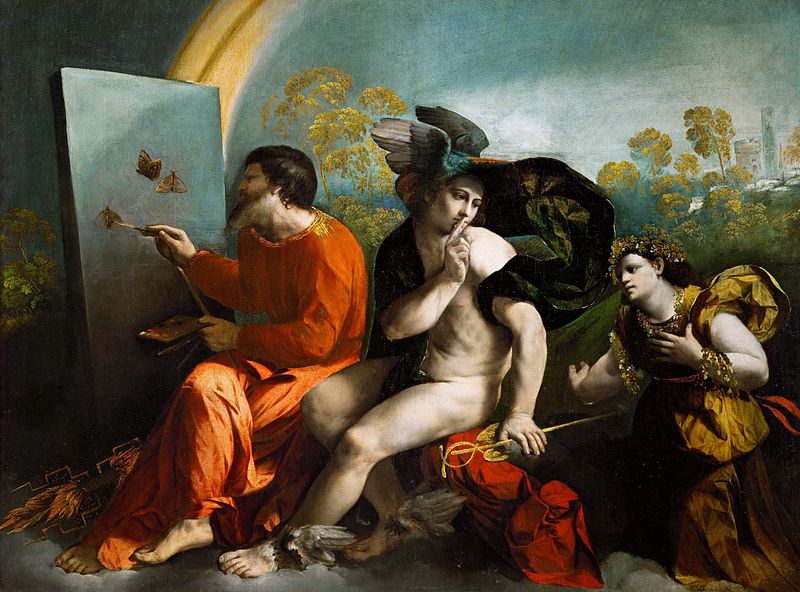The richness and complexity of the allusions and symbols in the painting make it still the subject of numerous debates on its interpretation.
On a soft cloud are the figures of Jupiter on the left, Mercury in the centre and a Virtue personified by a female figure. One of the peculiarities of the painting is precisely in the depiction of the king of all gods. Here Jupiter is depicted in a simple red tunic, intent in a manual activity – but only on a first reading – and only through the lightning bolt resting at his feet can he be identified. Jupiter is absorbed in his activity as a painter: legs crossed, colour palette and brushes in his hands, butterflies take shape on the canvas in front of him. The canvas and the sky seem to coincide, the two elements tuned by the same shade of cerulean shade blur into each other, creating the illusion that Jupiter is giving life to butterflies. Behind the canvas is a golden rainbow that could allude to the theme of alchemy and creation. This ray illuminates an evanescent landscape composed of trees with golden leaves, while on the far right a fortified city can be distinguished. Behind the god and in the centre of the composition is Mercury, whose iconological attributes are clearly identifiable – the petasus, the winged shoes and the golden caduceus – who protects the otium of his god from the arrival of a harried Virtue, who begs to be heard. The twisting of Mercury’s face is accompanied by the gesture of bringing a finger in front of his mouth, inviting silence from Virtue who seems about to make a request, thus ruining the God’s tranquillity and creative moment.
The painting is characterised by bright colours and contrasting colour combinations accentuated by the skilful use of red, gold and blue that give the work great narrative force.
According to Vincenzo Farinella’s most recent interpretation, the painting was commissioned for the Delizia di Belvedere (which was completely demolished following the Devolution of Ferrara) and it is here that the painting would complete its meaning. In fact, just like the God Jupiter, Duke Alfonso used to spend quiet and carefree hours away from political commitments (represented by Virtue breaking into the peace of otium) in this place of tranquillity, devoting himself to recreational activities. Thus the Duke is recognised in the figure of Jupiter not only by the correspondence of activities but also in the latter’s face probably inspired by Alfonso.







